-
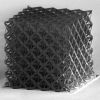 +35 +14
+35 +14A Lightweight Material for Building Better Planes and Batteries
Nanostructured ceramics could be used to build lighter, stronger airplanes and batteries.
-
 +23 +3
+23 +3Scientists Create Solid Light
On a late summer afternoon it can seem like sunlight has turned to honey, but could liquid—or even solid—light be more than a piece of poetry? Princeton University electrical engineers say not only is it possible, they’ve already made it happen. In Physical Review X, the researchers reveal that they have locked individual photons together so that they become like a solid object.
-
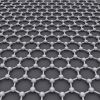 +18 +5
+18 +5Graphene paints a corrosion-free future
The surface of graphene, a one atom thick sheet of carbon, can be randomly decorated with oxygen to create graphene oxide; a form of graphene that could have a significant impact on the chemical, pharmaceutical and electronic industries. Applied as paint, it could provide an ultra-strong, non-corrosive ...
-
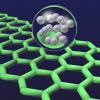 +20 +4
+20 +4Mass-producing graphene a step closer to reality, thanks to a friendly bet
Graphene is easy produced, but is not yet suitable for mass production. A new breakthrough may help revolutionize electronics and the energy industries, and it all started with a 10-dollar bet.
-
 +21 +4
+21 +4Drones at Sea: Automated cargo ships to set sail by 2035
By 2035 the world’s cargo will be carried by 200m fully automated vessels operating entirely without an onboard human crew, according to researchers. Carrying food and minerals, such ships will be safer, more environmentally friendly and cheaper to operate than current cargo vessels, according to members of MUNIN, a European Union-funded research project aiming to make unmanned cargo ships a reality.
-
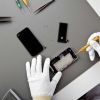 +24 +3
+24 +3Apple's iPhone 6 First Responders
As Apple prepares to unveil the iPhone 6 on Sept. 9, engineers are toiling in secrecy to make sure everything works properly. Their task won’t end when the phone goes on sale. As customers line up to buy the device around the world, Apple employees will show up at work to learn how they screwed up—and fix it.
-
 +2 +1
+2 +1Raj Atomic Power Station unit sets record
The Rajasthan Atomic Power Station (RAPS) unit-5 at Rawatbhatta recorded a continuous run of 765 days on Saturday, at its full capacity of 220 MWe. The unit has created an operation record, which is second only to the 894 days continuous run of a 500 MWe unit of the Pickering Nuclear Generating Station in Canada.
-
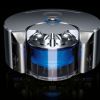 +33 +5
+33 +5Dyson invested more than $40M in this futuristic robot vacuum
We are inching closer to the spotless futuristic homes of The Jetsons, because today Dyson announced that it will introduce automated roving technology to its vacuum cleaners by releasing a self-guided vacuum robot.
-
 +24 +3
+24 +3This is Airlander, the world's largest aircraft
What do you get when you combine an air balloon, airplane, helicopter, and even a hovercraft? This is Airlander, the hybrid airship that's being build in Britain's historical Royal Air Force Cardington hangars, where the R101 airship was built nearly a century ago.
-
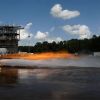 +12 +1
+12 +1NASA pushes the boundaries with 3D printing
NASA is revolutionizing 3-D printing by not only sending a printer to the International Space Station (ISS), but by also printing rocket parts similar to those used in their Space Launch System (SLS).
-
 +16 +4
+16 +4US Military Blows Up Hypersonic Weapon After Failed Test Launch
The U.S. Army launched a prototype hypersonic weapon test from Alaska on Monday (Aug. 25), only to destroy the superfast vehicle seconds later when something went wrong. The Advanced Hypersonic Weapon, as it is called, blasted off from Alaska's Kodiak Launch Complex just after 4 a.m. EDT (0800 GMT) on Monday, but was commanded to explode as a safety measure when an anomaly was detected in the test flight.
-
 +17 +2
+17 +2Sabre brings us one step closer to ultra high-speed Mach 5 air travel
Development is well underway for a new type of engine that could revolutionize high-speed air travel - making the ultrasonic Concorde of old look like a slowpoke. That same engine can also switch to a rocket mode, meaning it could be used to deliver satellites to orbit.
-
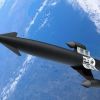 +20 +4
+20 +4Space plane tech could power hypersonic aircraft for U.S. military
Engine technology being developed for a British space plane could also find its way into hypersonic aircraft built by the U.S. military. The U.S. Air Force Research Laboratory is studying hypersonic vehicles that would use the Synergetic Air-Breathing Rocket Engine (SABRE), which the English company Reaction Engines Ltd. is working on to power the Skylon space plane, AFRL officials said.
-
 +19 +7
+19 +7Long-Lasting Solid-State Batteries Are Nearing Production
Applied Materials has started shipping equipment that could help double the energy storage of batteries.
-
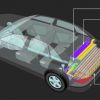 +14 +2
+14 +2The next big battery disruption isn’t coming next year
We’re used to electronic devices advancing in leaps and bounds, but sheer physics is holding back the largest part of them: the battery.
-
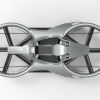 +13 +3
+13 +3Aero-X Hoverbike Takes Off in 2017 with Grounding $85,000 Price Tag
Engineering company Aerofex is about to blow your mind with its new invention, the Aero-X hover bike. The incredible vehicle can fly upwards of 10 feet off the ground at 45 mph for approximately 75 minutes!
-
 +16 +4
+16 +4New dimension for digital cities
Can greed and wastefulness be removed from our future cities?
-
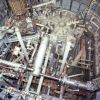 +26 +4
+26 +4Molten salt nuclear reactor that eats radioactive waste gets funded
Transatomic Power's molten salt reactor could provide cheap and efficient power generation that uses spent fuel again. Founders Fund has invested $2 million in the company to get things moving.
-
 +25 +5
+25 +5Artificial retina: Physicists develop an interface to the optical nerve
Physicists at Technische Universitat Munchen (TUM) are using the special properties of graphene to produce key elements of an artificial retina. With their research program the researchers were admitted to the heavily funded 'Graphene' Flagship Program of the European Union.
-
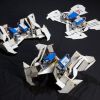 +18 +2
+18 +2Robots inspired by origami fold themselves into motion
Researchers in the US have developed self-folding robots that are able to take shape and crawl without human intervention. The robots are inspired by the ancient Japanese art of origami. They are made from flat layers of material; some of these are rigid and hold their shape, while others are made of a heat-shrinking polymer. Embedded elements within these layers provide heat, allowing the robot to self-construct.
Submit a link
Start a discussion




















